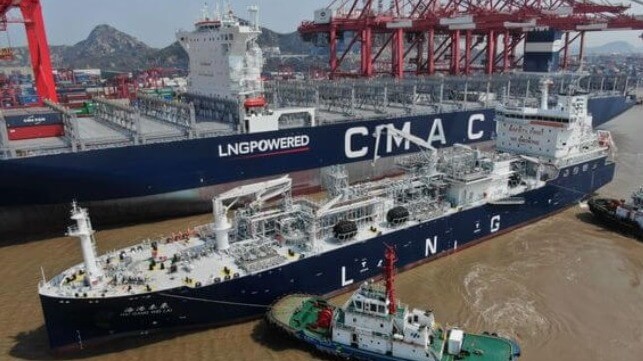European Project to Develop Solutions for Methane Slip from LNG Vessel

Orders for LNG-fueled ships are rapidly growing reaching new highs as the shipping industry seeks a near-term step toward addressing its goals of reducing emissions and improving the global fleet’s environmental performance. While viewed by many as one of the best currently available options for the shipping industry, the debate continues over methane slip, the release of unburnt gas, which is viewed by most scientists as very harmful to the environment.
Shipping industry and LNG-centered associations have argued that the industry is making strong progress in reducing or eliminating methane slip with the newest engines. They contend that LNG is being badly misrepresented by environmentalist groups.
Scientists and engineers however are continuing their focus on reducing methane slip. A new program with participation from many leaders in the industry including DNW, Shell, and Wartsila, and being led by the VTT Research Center of Finland, aims at minimizing methane slip from LNG-fueled vessels. Chantiers de l’Atlantique and MSC Malta Shipyard are also partners as are CMA Ships, MSC Cruises, and the Finish Meteorological Institute. The EU has awarded the project with €7 million in funding.
Known as the Green Ray project, it was launched last month with a five-year mandate to study methane slip and develop solutions. The project brief outlines components focusing on analyzing methane emissions, as well as the development of two on-engine technologies and one after-treatment technology that can be applied both for existing vessels and new builds. The project plans to demonstrate system prototypes in an operational environment aboard two new ships and one retrofit to existing vessels.
The project is focused on LNG engine technology based on a low-pressure dual-fuel concept that is the most popular in marine applications. One of the engine technologies they will be exploring is a four-stroke engine seeking to develop an application for the largest engines in the market and able to reduce slip at all engine load levels. These engines are the ones most commonly being used by cruise ships and ferries, as well as the current gas carriers.
Looking toward the containership and tanker segment, the project will also work on a two-stroke engine. Working with a patented LNG injection system, they will seek to significantly reduce methane slip to support the growth of LNG-fueled propulsion in these categories of shipping.
Finally, the project will also be working with a sulfur-resistant catalyst system that they believe can reduce methane emissions by up to 95 percent. The goal is to reduce methane slip to less than 1g/kWh.

that matters most
Get the latest maritime news delivered to your inbox daily.
The project through its data collection and analysis will also contribute to climate data studies on methane levels, which will allow for a more global assessment of GHG emissions from LNG marine fuel. The data collected will be combined with onboard experiments and modeling to provide a more comprehensive outlook of the climate impacts of marine transport.
A similar project was launched in Japan in 2021 aiming to achieve a methane slip reduction rate of more than 70 percent for LNG-fueled vessels over the next six years. The reduction will be achieved by combining methane oxidation catalysts and engine improvements, while other efforts are focusing on adapting exhaust scrubbers to also be able to achieve capture of methane before it is emitted into the environment.
